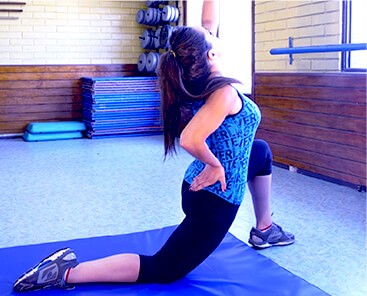Most gym goers overlook the importance of stretching, when in fact stretching should be considered part of the training session itself. Stretching has many benefits including: the reduction of muscle soreness, the prevention of injury, the release of lactic acid, the increase of blood flow and can also contribute to increased flexibility and correct posture.
Pre-workout Stretching:
The purpose of stretching prior to training is usually to help increase range of movement, thus also contributing to the reduction in injury. Dynamic stretching is believed to be the best form of stretching to help prepare the body for exercise. Dynamic stretching are active movements, where the muscles are stretched during the movement taking place. This type of stretching is thought to be best suited prior to training because it lubricates and warms the muscle.
Post-workout Stretching:
Stretching post workout is used to help reduce delayed onset muscle soreness (DOMS). Static stretching is typically used post training, this type of stretching involves a position being held for approximately 10-30 seconds in order to elongate the muscle fibres. However recently studies have identified that if static stretches are held too long, the impact of the stretch may in fact produce negative effects such as; temporarily decreasing power/force production. Research now suggest that short intense holds of 10seconds may be more beneficial than those of 30plus seconds.
In conclusion both static and dynamic stretching have their negatives and positives. Frequency and timing of stretching play a major role in whether it will benefit an individual, so when stretching the key is to be smart and consider the type of stretching being carried out.


